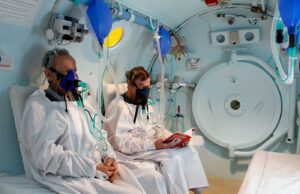
Digital patient engagement helps ensure better care and improved outcomes and strengthens the patient-provider relationship. To achieve this, healthcare organizations must create an environment where patients feel respected and engaged in their care.
Digital technology has increased our ability to engage patients by leveraging various digital tools, as illustrated below.
1. Digital Front Door
This latest innovation in healthcare technology allows patients to quickly and easily access medical services through a secure online portal.
Patient experience is greatly enhanced by streamlining processes for appointment bookings, healthcare information access, payment processing, and filing paperwork. This tool keeps patient information secure through advanced encryption technologies.
2. Healthcare Chatbots
Chatbots can answer questions, provide helpful hints and tips, and automate administrative processes such as appointment scheduling and follow-up care reminders. They also reduce waiting times by quickly answering patient queries.
This artificial intelligence (AI) powered tools are an excellent way to engage patients in their healthcare journey with accuracy and efficiency. An excellent source to check out all of the chatbot options available to healthcare practices can be found at qliqsoft.com.
3. HIPAA Secure Texting
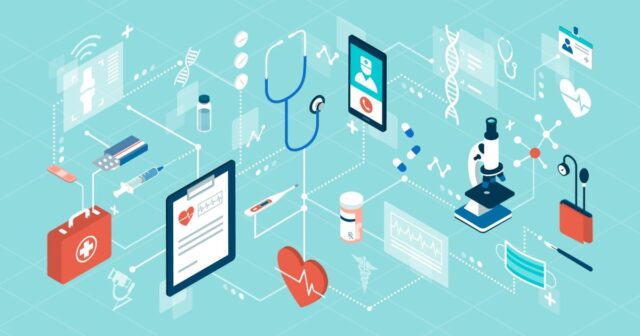
HIPAA secure texting enables healthcare organizations to communicate with patients securely across multiple devices. The messages exchanged between providers and patients remain confidential due to the encrypted messages and secure login features.
By being able to reach out at any time of day, healthcare providers are better equipped to provide timely answers when needed.
4. Virtual Visits
Virtual visits offer a convenient way for patients and healthcare organizations to connect without physical meetings. Through virtual visits, healthcare providers can conduct telemedicine services such as consultations and follow-up care from anywhere with an internet connection.
Virtual visits also provide greater flexibility for healthcare organizations, eliminating the need for physical space and staffing.
5. Patient Portals
Patient portals enable healthcare organizations to store patient information securely and share it with authorized users on a need basis.
Patients can access and keep track of their health records and related data from anywhere through a secure portal. They can also request appointments, pay bills, and communicate with their providers through the portal.
6. Wearable Technologies
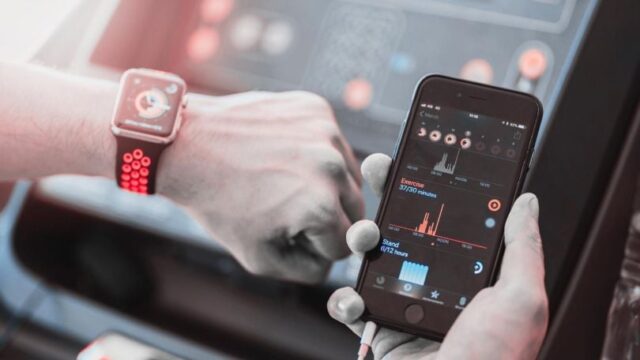
Wearable technologies such as fitness trackers or smart watches make it easy to monitor patient vitals in real-time.
These devices are equipped with sensors that allow users to measure key vitals such as blood pressure, heart rate, and body temperature. The data is then synced automatically with healthcare providers’ EHR systems for quick analysis and alerting if needed.
7. Remote Patient Monitoring
By utilizing remote patient monitoring technologies, healthcare organizations can better manage chronic conditions such as diabetes, hypertension, etc. It also helps improve adherence to treatment plans by providing timely reminders and alerts when needed.
You can use the data collected through remote patient monitoring to create personalized care plans that consider individual needs.
8. AI-Powered Patient Engagement
AI-powered patient engagement solutions are being used to provide personalized care plans, reminders, and follow-up care.
They also offer real-time feedback and insights and automated communication between providers and patients. This helps healthcare organizations create better experiences and develop long-lasting patient relationships.
9. Robotic Process Automation (RPA)
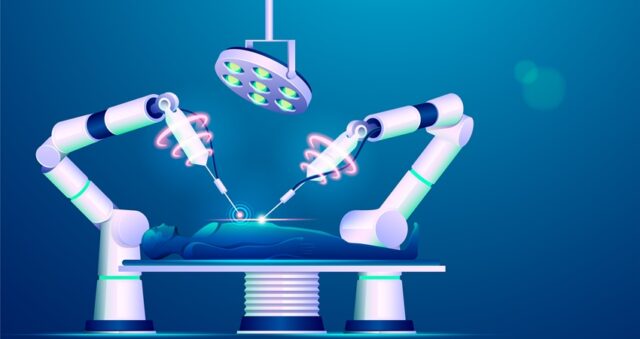
Robotic process automation (RPA) enables healthcare organizations to automate high-volume; repetitive tasks such as claims processing, billing, and patient data entry.
Subsequently, healthcare organizations can reduce costs and improve accuracy and efficiency. RPA also helps streamline administrative functions and allows providers more time to focus on the quality care of their patients.
10. Data Analytics
Data analytics tools help healthcare organizations analyze patient data for better insights into care trends, usage patterns, and outcomes of treatments.
This helps them identify areas where they can improve to provide their patients with the best care experience. Data collected can also be used in clinical research studies or decision-making strategies.
11. AI-Assisted Diagnostics
AI-assisted diagnostic tools are being developed to speed up diagnosis and treatment. Using AI algorithms, these technologies can detect subtle changes in data that would otherwise be difficult for healthcare providers to spot.
They also enable faster decision-making as the analysis is carried out automatically. This helps healthcare organizations deliver better care with greater accuracy.
12. Blockchain Technology

In the healthcare sector, blockchain technology has been used for storing patient records, claims processing, and drug traceability.
By leveraging blockchain technology, healthcare organizations are able to access accurate and reliable data from different sources instantly without compromising the security or authenticity of the information exchanged.
13. Voice-Enabled Technologies
Voice-enabled technologies make it easier for healthcare providers to quickly access and analyze patient data. One can use voice commands to search for information, review lab results, or order medications.
This technology also helps improve the accuracy of data entry since there is no manual entry, enabling a more natural dialogue between patients and healthcare professionals.
14. Automated Scheduling
Automated scheduling tools help streamline appointment bookings and rescheduling processes. They are equipped with features such as automated reminders to ensure that appointments are not missed while eliminating the need for manual data entry.
These systems can be integrated into existing EHRs, allowing healthcare organizations to manage their workflow and patient engagement better.
15. Connected Devices
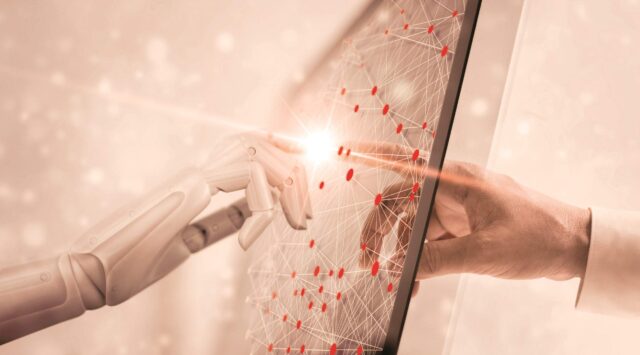
Connected devices are being used to collect and transmit real-time data from patients to healthcare providers.
This helps healthcare professionals monitor patient health remotely, allowing them to quickly identify any changes in condition or symptoms that may need further medical attention. Connected devices also support preventive care by offering proactive reminders for checkups and medication refills.
16. Augmented Reality
Healthcare organizations can use augmented reality (AR) to enhance the patient experience by providing interactive visualizations that make medical information easier to understand.
AR can also be a training tool, allowing healthcare professionals to practice complex surgical procedures without conducting them. Additionally, this technology can help doctors diagnose conditions faster and more accurately.
17. Robotic Surgery
Robotic-assisted surgical procedures involve the use of robotic systems that allow surgeons to perform complex operations with greater precision and accuracy than traditional methods.
This technology has improved accuracy while reducing risks associated with surgery, making it a safer and less invasive option for many patients. In addition, robotic surgery also reduces operating times.
18. Predictive Analytics
Predictive analytics is used in healthcare to identify potential health risks and outcomes before they occur.
Healthcare organizations use data-driven insights gained through predictive analytics to target specific interventions or therapies that can effectively address identified issues before they become problematic. This helps improve patient care and reduce treatment costs over time.
19. Virtual Reality
Virtual reality (VR) allows healthcare professionals to deliver immersive experiences for their patients without needing them to leave the comfort of their own homes. VR is applicable in remote monitoring, therapy sessions, or even surgical simulations.
It is an effective tool for engaging patients, helping them better understand their condition, and educating them on how to manage it effectively.
20. Pop-up clinics
Pop-up clinics are increasingly used to provide on-demand healthcare services and increase access to care for underserved communities.
These mobile facilities offer care services, such as wellness visits and screenings in local neighborhoods that may not have access to traditional healthcare facilities. This technology is helping improve convenience and to reduce barriers to care.
By leveraging digital health technologies, healthcare organizations can leverage the power of data to personalize patient care plans while improving efficiency in their operations.

This will enable them to deliver better health outcomes at lower costs, leading to a healthier population. By utilizing these tools effectively, healthcare providers can empower their patients and strengthen the healthcare system.








